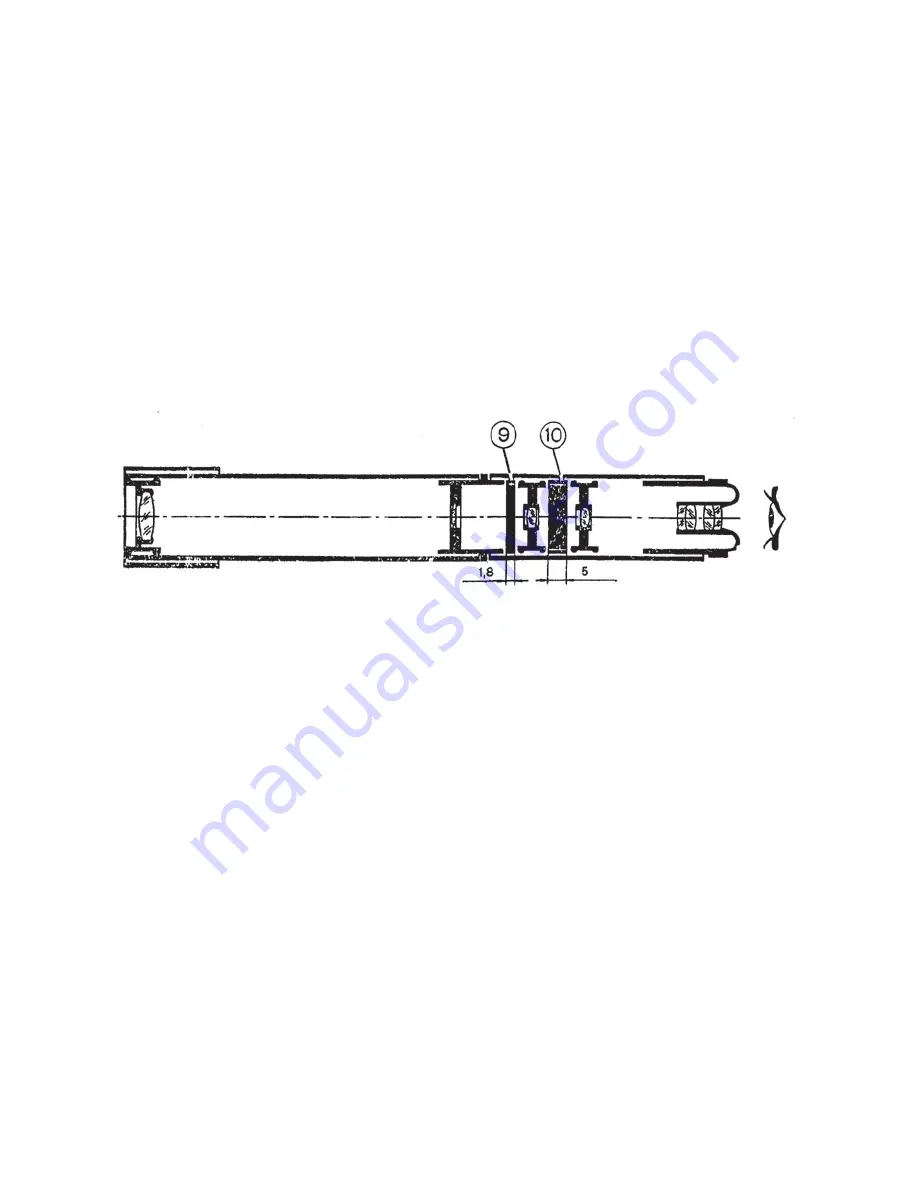
SKU 93233
For technical questions please call 1-800-444-3353
Page 11
#5 The Terrestrial 20X Telescope
This telescope has magnification double that of the 10X telescope. However,
its angle of view is 2 times smaller. Consequently, it is useful for viewing
objects at least 20 meters (65 feet) away.
Build the 20X telescope the same way as you built the 10x with the following
changes:
In step 3 insert 1.8mm Spacer (09), instead of Spacer (12).
In step 5 insert 5mm Spacer (10) instead of Spacer (13).
NOTE: If you have difficulty focusing either Telescope 10X or 20X, recheck the
position of all parts. You may also adjust the position of Objective Lens (08)
slightly.
Terrestrial 10X Telescope
#6 17X Microscope
Microscopes are used for examining very small objects. Microscopes work
very much like telescopes, but have very different focal lengths between the
eyepiece and lens “d”, and between the lens and object “D”.
To assemble the 17X microscope:
1.
Place the Microscope Base (03) on a clean, hard and flat surface.
2.
Place the Drawtube (2) on end on the work table with the number “2” at the
bottom. Insert the 21mm Spacer (14) into the Drawtube and press it all the
way to the bottom. (If Spacer (14) has distinctive rings on one side, insert that
side down.)
3.
Insert Inversion Lens (05) into the Drawtube with the marking “5” towards the
Spacer below it.













